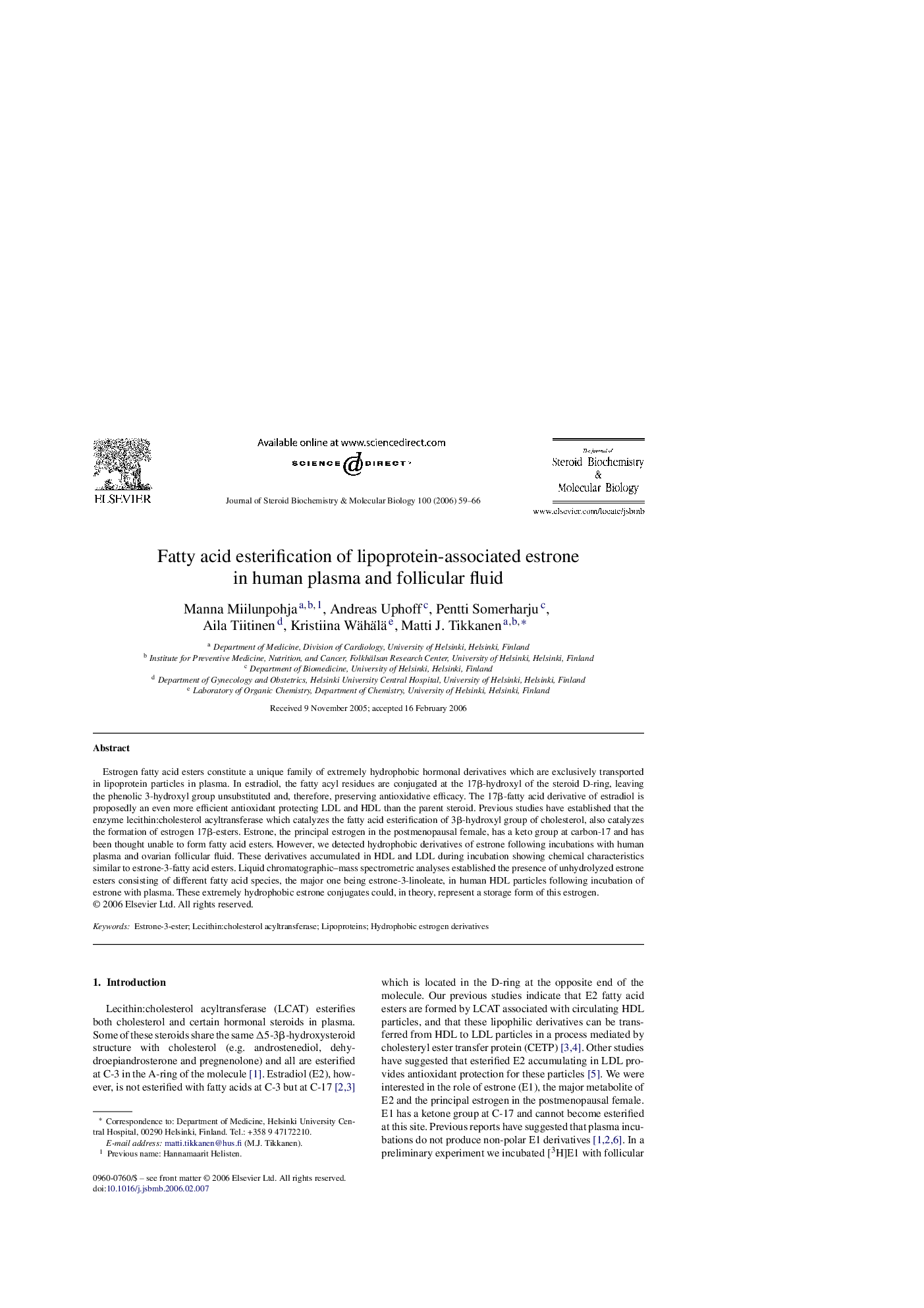| Article ID | Journal | Published Year | Pages | File Type |
|---|---|---|---|---|
| 1992777 | The Journal of Steroid Biochemistry and Molecular Biology | 2006 | 8 Pages |
Abstract
Estrogen fatty acid esters constitute a unique family of extremely hydrophobic hormonal derivatives which are exclusively transported in lipoprotein particles in plasma. In estradiol, the fatty acyl residues are conjugated at the 17β-hydroxyl of the steroid D-ring, leaving the phenolic 3-hydroxyl group unsubstituted and, therefore, preserving antioxidative efficacy. The 17β-fatty acid derivative of estradiol is proposedly an even more efficient antioxidant protecting LDL and HDL than the parent steroid. Previous studies have established that the enzyme lecithin:cholesterol acyltransferase which catalyzes the fatty acid esterification of 3β-hydroxyl group of cholesterol, also catalyzes the formation of estrogen 17β-esters. Estrone, the principal estrogen in the postmenopausal female, has a keto group at carbon-17 and has been thought unable to form fatty acid esters. However, we detected hydrophobic derivatives of estrone following incubations with human plasma and ovarian follicular fluid. These derivatives accumulated in HDL and LDL during incubation showing chemical characteristics similar to estrone-3-fatty acid esters. Liquid chromatographic-mass spectrometric analyses established the presence of unhydrolyzed estrone esters consisting of different fatty acid species, the major one being estrone-3-linoleate, in human HDL particles following incubation of estrone with plasma. These extremely hydrophobic estrone conjugates could, in theory, represent a storage form of this estrogen.
Related Topics
Life Sciences
Biochemistry, Genetics and Molecular Biology
Biochemistry
Authors
Manna Miilunpohja, Andreas Uphoff, Pentti Somerharju, Aila Tiitinen, Kristiina Wähälä, Matti J. Tikkanen,
